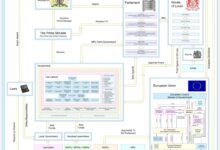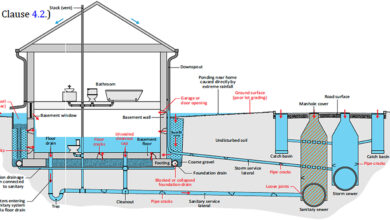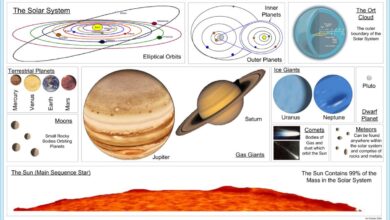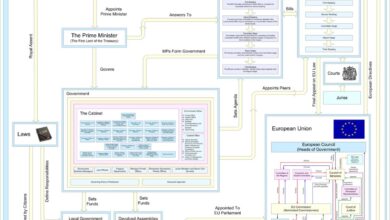System Design Interview: 7 Ultimate Secrets to Dominate Any Tech Giant
Landing your dream job at a top tech company? Mastering the system design interview is non-negotiable. It’s not just about coding—it’s about thinking big, scaling smart, and impressing senior engineers with your architectural vision.
What Is a System Design Interview?

A system design interview is a critical evaluation used by top-tier tech companies like Google, Amazon, and Meta to assess a candidate’s ability to design scalable, reliable, and efficient software systems. Unlike coding interviews that focus on algorithms, this round tests high-level thinking, trade-off analysis, and real-world problem-solving.
Core Purpose of the Interview
The main goal is to evaluate how well you can break down a complex problem into manageable components. Interviewers want to see your thought process—not just the final answer. Can you ask the right questions? Can you make reasonable assumptions? Do you understand the constraints?
- Evaluate architectural reasoning and system thinking
- Test communication skills under ambiguity
- Assess trade-off decisions (e.g., consistency vs. availability)
“In a system design interview, there’s no single correct answer—only better or worse designs based on context.” — Alex Xu, author of System Design Interview – An Insider’s Guide
When Is It Conducted?
Typically, system design interviews are part of mid-to-senior level engineering roles (L4 and above). Junior developers may face simplified versions, but the full scope usually appears in interviews for positions requiring ownership of large-scale systems.
- Mid-level to senior software engineer roles
- Backend, full-stack, and infrastructure-focused positions
- Often occurs after passing coding and behavioral rounds
For example, at Amazon, candidates for SDE II roles will face at least one system design round, often using their Leadership Principles as evaluation criteria. You can learn more about Amazon’s process on their Software Development Careers page.
Why System Design Interview Matters More Than Ever
As applications grow in complexity and user base, companies can’t afford engineers who only write code without understanding the bigger picture. The system design interview separates those who build features from those who build platforms.
Rising Demand for Scalable Systems
With the explosion of data, mobile users, and real-time services, systems must handle millions of requests per second. A poorly designed backend can crash under load, lose data, or become unmaintainable. Interviewers look for candidates who inherently think about scalability from day one.
- Global user bases require geo-distributed systems
- Microservices architecture demands clear boundaries
- Cloud-native design is now standard, not optional
For instance, designing a service like Twitter or Instagram requires understanding how to scale feeds, manage follower graphs, and serve media efficiently across continents.
It Tests Real Engineering Judgment
Real engineering isn’t about memorizing patterns—it’s about making smart decisions with incomplete information. In a system design interview, you’ll be asked to choose between SQL and NoSQL, decide on caching strategies, or pick message queues based on durability needs.
- Trade-offs between consistency and latency
- Choosing between monoliths and microservices
- Handling failure modes and retries
“The best engineers don’t just know tools—they know when and why to use them.”
Common Types of System Design Interview Questions
While every company has its style, certain question types recur across FAANG and other tech giants. Familiarity with these patterns gives you a significant edge.
Design a URL Shortening Service (e.g., TinyURL)
This classic problem tests your ability to design a distributed system with key components: generating short codes, storing mappings, handling redirects, and scaling for high traffic.
- Need for unique ID generation (e.g., base-62 encoding)
- Choosing between database sharding and key-value stores
- Implementing caching (e.g., Redis) for hot URLs
- Handling expiration and cleanup of old links
A well-structured solution considers both functional and non-functional requirements. You can explore scalable ID generation techniques on Wikipedia’s UUID page.
Design a Social Media Feed (e.g., Twitter or Facebook)
This is one of the most challenging system design interview questions because it involves complex data models, real-time updates, and personalization.
- Two main approaches: pull-based (fan-out on read) vs. push-based (fan-out on write)
- Hybrid models for balancing freshness and performance
- Dealing with viral content and skewed access patterns
- Using message queues (e.g., Kafka) for decoupling services
For example, Twitter uses a hybrid approach: most tweets are fanned out to followers’ timelines, but for highly followed accounts, they use real-time aggregation to avoid overwhelming the system.
Design a Chat Application (e.g., WhatsApp or Slack)
Real-time communication systems introduce challenges around message delivery, ordering, presence detection, and offline sync.
- WebSocket vs. long-polling for persistent connections
- Ensuring message durability with persistent queues
- End-to-end encryption considerations
- Scaling to millions of concurrent connections
Slack, for instance, uses a combination of WebSocket and fallback mechanisms to ensure reliability across networks. You can read more about their infrastructure on the Slack Engineering Blog.
Step-by-Step Framework to Ace Any System Design Interview
Having a repeatable framework is crucial. It keeps you structured, reduces panic, and ensures you cover all critical aspects. Here’s a proven 6-step method used by successful candidates.
Step 1: Clarify Requirements (Functional & Non-Functional)
Never jump into design immediately. Start by asking clarifying questions to define the scope.
system design interview – System design interview menjadi aspek penting yang dibahas di sini.
- How many users? (e.g., 100M monthly active users)
- What are the core features? (e.g., post, like, comment)
- What are the latency, availability, and consistency requirements?
- Is it read-heavy or write-heavy?
Example: For a ride-sharing app like Uber, you’d ask about rider/driver matching, real-time location updates, and payment processing.
Step 2: Estimate Scale (Traffic, Storage, Bandwidth)
Back-of-the-envelope calculations show you think quantitatively. Interviewers love this.
- Requests per second (QPS): 100K reads, 10K writes
- Storage growth: 1TB/month for user data
- Bandwidth: 10Gbps outbound for image delivery
Use simple math: If 1M users generate 10 requests/day, that’s ~115 QPS. Factor in peak loads (e.g., 3x average).
Step 3: Define Core Components
Break the system into services: API gateway, user service, post service, notification service, etc.
- Identify microservices boundaries using domain-driven design
- Define APIs (REST or gRPC) between services
- Plan for authentication, rate limiting, logging
For example, in a video streaming service, you’d have separate services for upload, transcoding, metadata, and playback.
Step 4: Design Data Model & Storage
Choose the right database based on access patterns.
- Relational (PostgreSQL) for ACID transactions
- NoSQL (Cassandra, DynamoDB) for high write throughput
- Document stores (MongoDB) for flexible schemas
- Graph databases (Neo4j) for social networks
Also consider indexing, sharding keys, and replication strategies.
Step 5: Add Caching, Load Balancing, and CDN
Performance optimization is key in any system design interview.
- Use Redis or Memcached for hot data (e.g., user profiles)
- Implement multi-level caching (local + distributed)
- Use load balancers (e.g., NGINX, ELB) for traffic distribution
- Leverage CDNs for static assets (images, videos)
Facebook, for example, uses a massive in-house caching layer called Memcached at scale to serve billions of requests daily.
Step 6: Address Fault Tolerance & Monitoring
No system is perfect. Show you understand failure modes.
- Implement retries, circuit breakers, and rate limiting
- Use message queues (Kafka, RabbitMQ) for async processing
- Add logging (ELK stack), monitoring (Prometheus), and alerting
- Plan for disaster recovery and backups
Netflix’s Chaos Monkey randomly kills instances to ensure resilience—this mindset should reflect in your design.
Key Concepts You Must Master for System Design Interview
Beyond frameworks, you need deep understanding of foundational concepts. These are the building blocks of any robust system.
Scalability: Vertical vs. Horizontal
Scalability is the system’s ability to handle growth. Vertical scaling (bigger machines) has limits. Horizontal scaling (more machines) is the cloud way.
- Horizontal scaling requires stateless services and externalized sessions
- Use auto-scaling groups in AWS or GCP for dynamic capacity
- Be aware of coordination overhead in distributed systems
Instagram scaled horizontally by sharding their MySQL databases early on, allowing them to grow to millions of users.
Availability & Reliability
Availability is uptime (e.g., 99.99%). Reliability is consistent performance under stress.
- Use redundancy: multiple replicas across availability zones
- Implement health checks and failover mechanisms
- Design for graceful degradation (e.g., serve stale data if DB is down)
Google’s Spanner achieves high availability through globally distributed Paxos-based consensus.
Consistency Models: Strong, Eventual, Causal
Consistency defines how up-to-date data is across replicas.
- Strong consistency: all nodes see the same data at the same time (e.g., banking)
- Eventual consistency: updates propagate over time (e.g., social media)
- Causal consistency: related operations are ordered correctly
The CAP theorem states you can’t have Consistency, Availability, and Partition Tolerance all at once. Most systems choose AP (e.g., DynamoDB) or CP (e.g., ZooKeeper).
system design interview – System design interview menjadi aspek penting yang dibahas di sini.
How to Prepare for a System Design Interview: A 30-Day Plan
Preparation is everything. Here’s a realistic, structured plan to go from beginner to confident in one month.
Week 1: Learn the Fundamentals
Build your foundation. Focus on core concepts and common patterns.
- Read: Designing Data-Intensive Applications by Martin Kleppmann
- Watch: MIT 6.824 Distributed Systems lectures on YouTube
- Study: CAP theorem, consensus algorithms (Paxos, Raft), and replication
Also, explore Donne Martin’s System Design Primer on GitHub, one of the most popular open-source resources.
Week 2: Practice Common Problems
Apply theory to practice. Work on 2-3 problems per day.
- Design a parking lot (object-oriented + system design)
- Design a rate limiter
- Design a distributed cache
- Design a file-sharing service like Dropbox
Use a whiteboard or online tool like Excalidraw to sketch diagrams.
Week 3: Mock Interviews & Feedback
Simulate real conditions. Practice speaking your thoughts aloud.
- Pair up with a peer or use platforms like Pramp or Interviewing.io
- Record yourself and review for clarity and structure
- Get feedback on missing components or poor trade-off analysis
Focus on communication: explain your assumptions, justify choices, and invite feedback.
Week 4: Review & Refine
Polish your approach. Revisit weak areas and refine your framework.
- Re-solve previous problems with tighter estimates
- Memorize key numbers (e.g., disk seek time, network latency)
- Prepare a 2-minute summary of your favorite system (e.g., how Google Search works)
Confidence comes from repetition. By day 30, you should be able to walk into any system design interview with a clear mental model.
Top Mistakes to Avoid in a System Design Interview
Even smart engineers fail due to avoidable errors. Here are the most common pitfalls.
Mistake 1: Jumping into Design Too Quickly
Rushing to draw boxes without clarifying requirements is a red flag. Interviewers want to see structured thinking.
- Always start with questions: Who are the users? What are the use cases?
- Define functional and non-functional specs before designing
Taking 5 minutes to scope the problem shows maturity and prevents wasted effort.
Mistake 2: Ignoring Scalability and Estimation
Designing for 10 users vs. 10 million matters. Skipping back-of-the-envelope math makes your design unrealistic.
- Estimate QPS, storage, and bandwidth early
- Factor in peak traffic (e.g., Black Friday for e-commerce)
For example, if you’re designing a food delivery app, calculate how many orders per second during dinner rush.
Mistake 3: Over-Engineering the Solution
Don’t add Kafka, Kubernetes, and machine learning unless necessary. Start simple.
- Begin with a monolith, then scale out if needed
- Use standard tools before proposing custom solutions
Interviewers appreciate simplicity. As Einstein said, “Make things as simple as possible, but not simpler.”
Mistake 4: Poor Communication and Diagramming
If the interviewer can’t follow your logic, you’ll fail—even with a good design.
- Speak clearly and narrate your thought process
- Draw clean, labeled diagrams with components and data flow
- Avoid tiny handwriting or messy arrows
Practice drawing on a whiteboard or tablet to improve clarity.
system design interview – System design interview menjadi aspek penting yang dibahas di sini.
Real-World Examples: How Tech Giants Handle System Design
Learning from actual systems gives you credibility and depth in your answers.
Google’s Search Infrastructure
Google processes over 8.5 billion searches per day. Their system design is a masterpiece of distributed computing.
- Crawling: Googlebot fetches web pages continuously
- Indexing: Inverted indexes map keywords to pages
- Ranking: PageRank and AI models determine relevance
- Distributed serving: Queries are routed to the nearest data center
They use custom infrastructure like Bigtable and Colossus (file system) to handle scale. You can read more on Google Research Publications.
Amazon’s DynamoDB Architecture
DynamoDB is a prime example of a highly available, partition-tolerant NoSQL database.
- Uses consistent hashing for partitioning
- Replicates data across multiple AZs
- Offers tunable consistency (strong or eventual)
- Auto-scales throughput based on demand
It’s built on the principles of the original Dynamo paper, which revolutionized distributed key-value stores.
Netflix’s Microservices Ecosystem
Netflix runs on over 1,000 microservices, each independently deployable and scalable.
- Uses Eureka for service discovery
- Hystrix for circuit breaking
- Zuul as an API gateway
- Chaos Engineering to test resilience
Their culture of “freedom and responsibility” empowers engineers to design robust systems. Learn more on the Netflix Tech Blog.
What is the most common system design interview question?
One of the most frequently asked questions is “Design a URL shortener like TinyURL.” It’s popular because it covers key aspects like ID generation, database design, caching, and scalability—all in a compact problem.
How long should I prepare for a system design interview?
Most engineers need 4–8 weeks of dedicated preparation, especially if they lack prior experience with large-scale systems. Focus on understanding concepts, practicing problems, and doing mock interviews.
Do I need to know coding for a system design interview?
Not extensively. While you won’t write full programs, you may need to sketch pseudocode for critical components (e.g., a rate limiter algorithm). The focus is on architecture, not syntax.
What if I don’t know the answer to a design question?
That’s okay—no one expects perfection. Focus on asking clarifying questions, making reasonable assumptions, and thinking aloud. A structured approach often matters more than the final design.
Can junior engineers be asked system design questions?
Yes, but usually in a simplified form. Junior candidates might be asked to design a small feature or discuss basic concepts like caching or databases, rather than full-scale systems.
Mastering the system design interview is a journey, not a sprint. It requires understanding distributed systems, practicing real problems, and refining your communication. By following a structured framework, avoiding common mistakes, and learning from real-world examples, you can confidently tackle any design challenge. Whether you’re aiming for Google, Meta, or a high-growth startup, the skills you develop will serve you far beyond the interview room. Remember, it’s not about knowing everything—it’s about thinking like a systems engineer.
system design interview – System design interview menjadi aspek penting yang dibahas di sini.
Recommended for you 👇
Further Reading:









